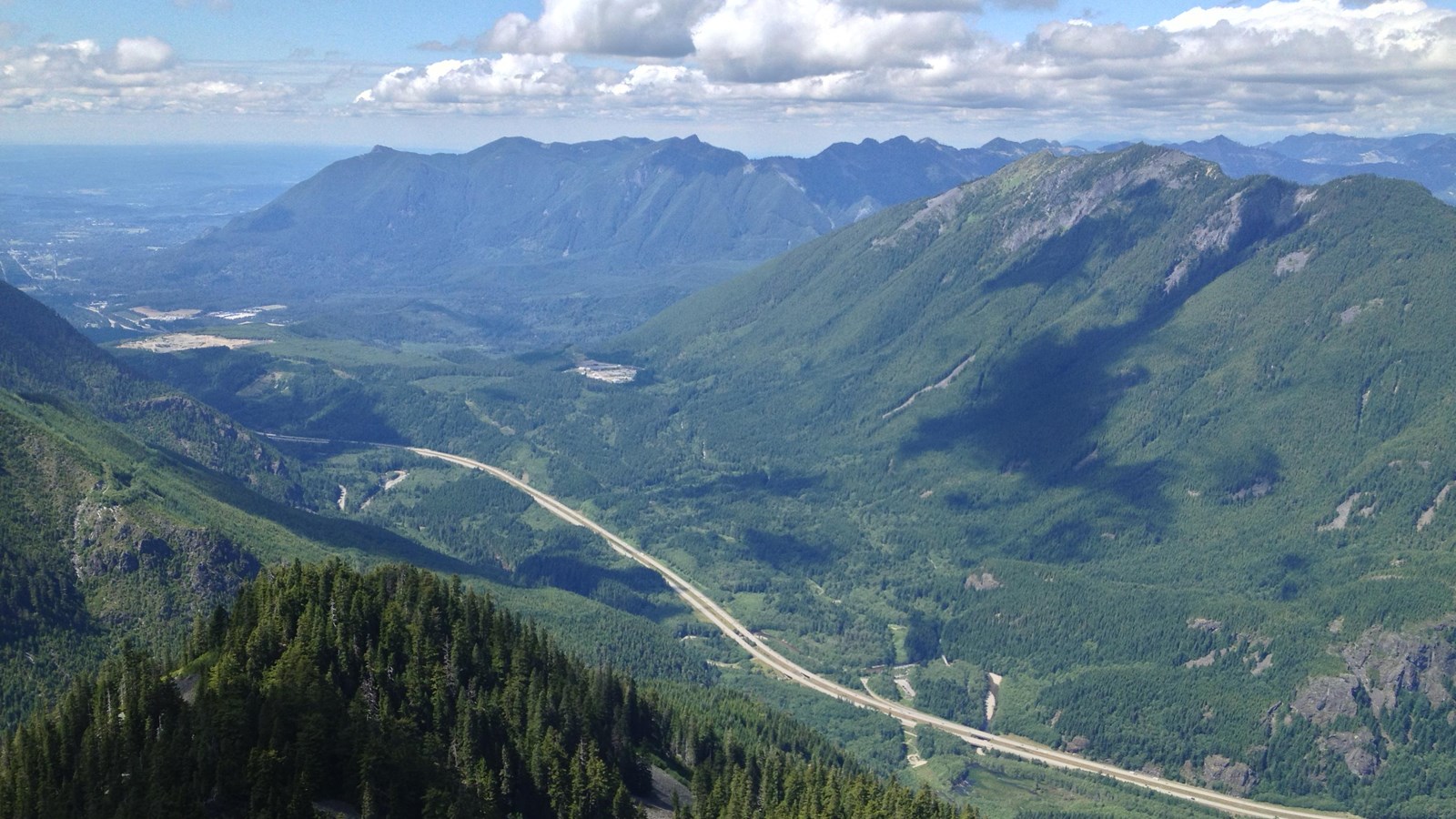Last updated: August 4, 2022
Place
Mountains to Sound Greenway National Heritage Area

Photo Courtesy of Mountains to Sound Greenway National Heritage Area
Designated in 2019, the Mountains to Sound Greenway National Heritage Area (MSGNHA) stretches nearly 100 miles along the I-90 corridor from Seattle to Ellensburg. The Coordinating Entity is the Mountains to Sound Greenway Trust, a regional nonprofit organization formed in 1991 to conserve and enhance the Mountains to Sound Greenway.
The 1.5 million-acre MSGNHA encompasses the Seattle metropolitan area, 28 cities and towns, working farms, community forests, wild rivers, alpine wilderness, wolf packs, and wild salmon runs. The NHA is also home to more than 2 million people.
Native Americans first traversed this landscape on footpaths, sustaining their communities and trading on the region’s natural abundance. In the mid-1800s, they signed treaties with the US government that ceded their lands and defined the Native American reservation lands for the region. Importantly, when tribes signed those treaties, they reserved their rights to fish, hunt, and gather. Today, Northwest Tribes – including the Colville, Muckleshoot, Snoqualmie, Tulalip, and Yakama Tribes --- continue to fish, hunt, and gather as part of their traditions.
In 1862, Abraham Lincoln issued “checkerboard” land grants of alternating parcels in the newly ceded territory to spur development of the Northern Pacific Railway. The Northern Pacific would soon connect the Pacific Northwest to the rest of the United States, attracting immigrants from the Midwest, Europe and Asia who began extracting the region’s astonishing supply of big Douglas fir, red cedar, spruce, pine, maple, and alder as well as coal, gold, and other metals. The invention of industrial-scale timber extraction and the founding of the country’s first major industrial timber companies emerged from the sale of the checkerboard parcels once the railroad was built.
The cross-country Yellowstone Trail transformed the corridor to an automobile route in 1912 and led eventually to the development of Interstate 90, which serves to this day as the major conveyance route for people and goods between Seattle and Puget Sound ports, inland Washington and beyond.
As a culture of appreciation for this landscape’s special environmental qualities and outdoor recreation opportunities has emerged and thrived in the region over the last generation, public land conservation projects have consolidated the old railroad checkerboard lands and repurposed old logging roads for trails.
Thus, the MSGNHA conserves natural wonders, invites exploration, and tells the stories of how people, trade, and transportation have shaped, and still shape, this iconic Pacific Northwest landscape.
